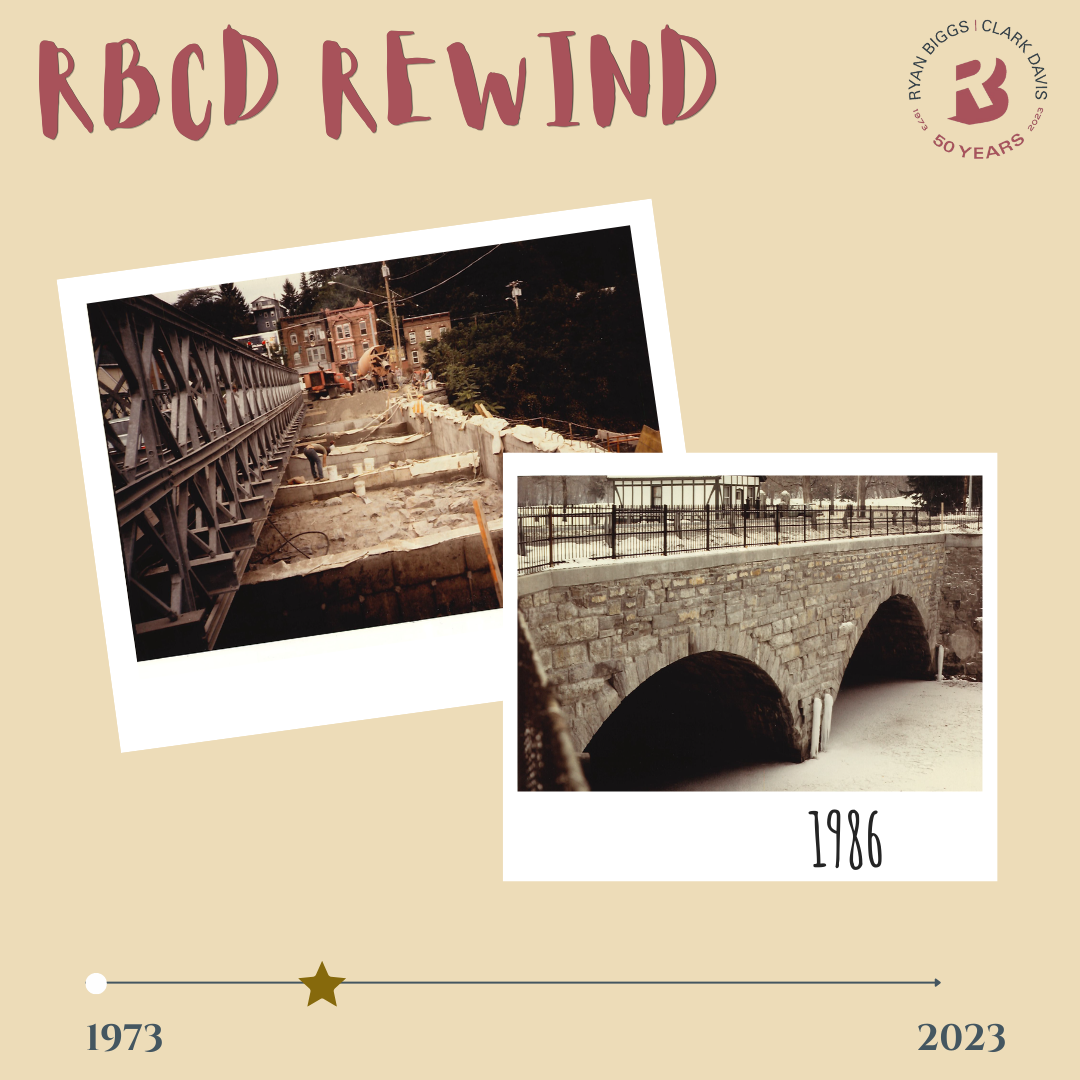RBCD Rewind: Pawling Avenue Bridge
In the mid-1980s, an historically significant stone masonry arch bridge in Troy, NY, was saved from almost certain destruction through the innovative use of concrete.
The ravages of time and the elements had caused significant deterioration in the bridge threatening its integrity. The versatility of concrete made it possible to rehabilitate the bridge economically without destroying its appearance and significance.
The Pawling Avenue Bridge spans the Poesten Kill and is a double-arch, earth-filled, stone masonry structure spanning nearly 90 feet. Built in 1875, inspections revealed that water was penetrating the backfill causing significant lateral movement of the spandrel walls due to freeze-thaw. Since the bridge was listed on the National Register of Historic Places, structural rehabilitation using concrete rather than total replacement was selected, thereby maintaining the appearance and historical significance of the bridge. Rehabilitation included total removal and replacement of spandrel walls as well as repairs to cracked arch rings. An internal waterproofing and drainage system was installed above the arches. Concrete spandrels and cross walls were cast over the arches to retain the earth fill. The arches were waterproofed, and the spandrel stones were rebuilt as veneer. The stones were returned to their original locations and mortared in place, thus maintaining the original beauty of the 19th century bridge.
#RBCD50 #RBCDrewind #structuralengineering #capitalregion #bridgedesign #historic #bridgerestoration #historicbridge #enjoytroy #goldenanniversary #thisis50 #tbt #throwbackthursday
